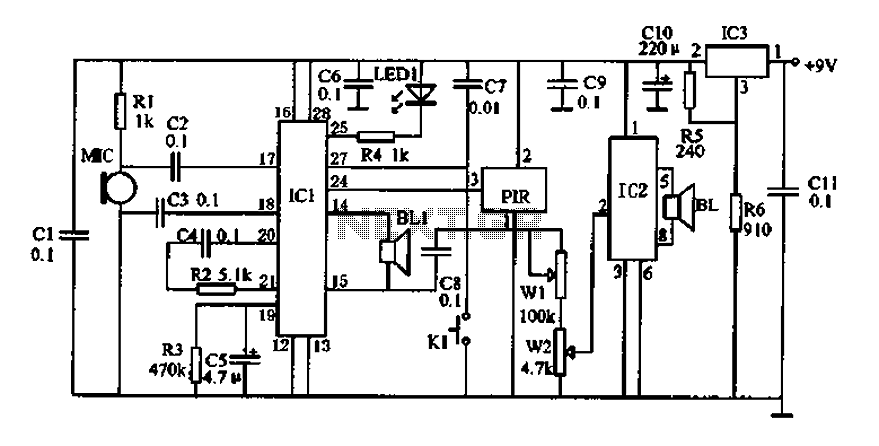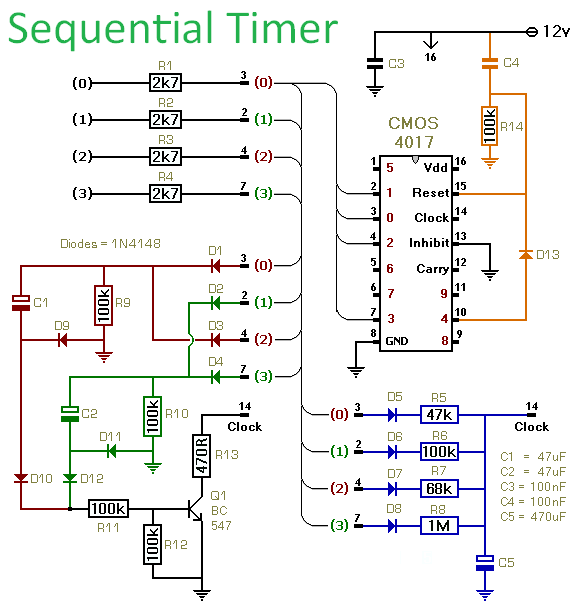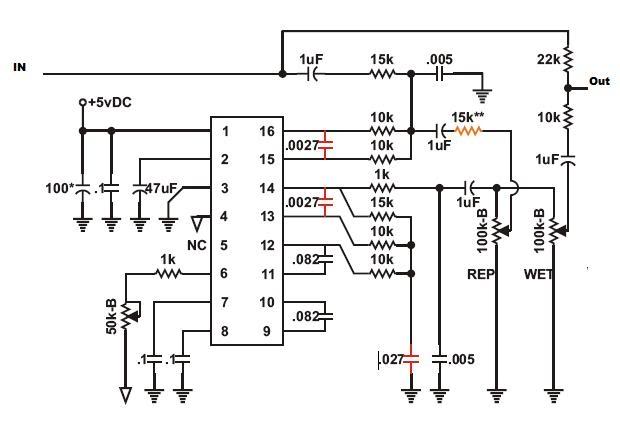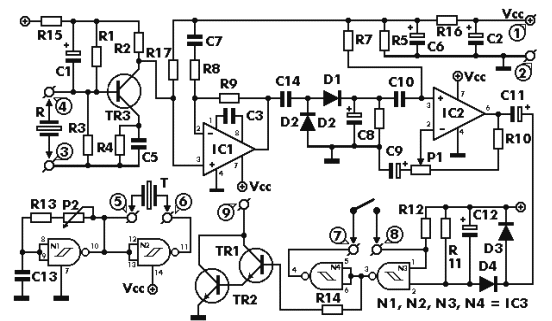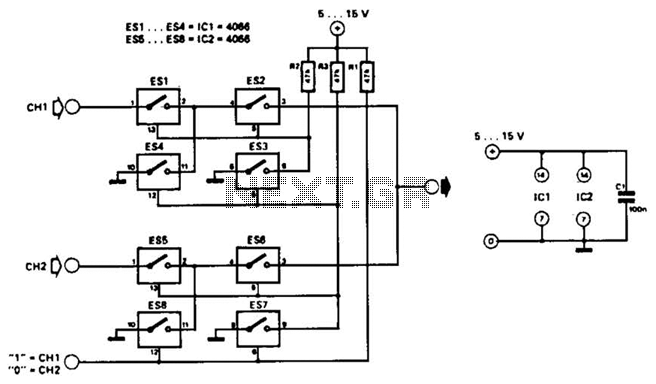
Sequence timer circuit diagram of 555 chips

A 0.001 F coupling capacitor connects the output of the first half of a 556 timer to the input of the second half, providing an individual delay that equals the total delay. The 6-foot ground can immediately activate the first half of the timer. Following the interval determined by the 1.1R1C1 delay, the subsequent start delay timer value is influenced by the 1.1R2C2 configuration.
The described circuit utilizes a 556 timer IC, which consists of two independent timer circuits capable of operating in monostable or astable modes. In this configuration, the first half of the 556 timer generates a pulse that is coupled to the second half through a 0.001 F capacitor. This capacitor serves to isolate the two stages while allowing the timing pulse to pass, effectively enabling the second timer to start its operation based on the output from the first.
The timing of the first half is determined by the resistor R1 and capacitor C1, where the delay time (T1) can be calculated using the formula T1 = 1.1 * R1 * C1. This establishes the duration of the output pulse from the first timer stage. The output pulse can trigger the second timer stage, which is similarly configured with resistor R2 and capacitor C2. The timing for the second stage (T2) is given by T2 = 1.1 * R2 * C2, which determines how long the output from the second timer remains active.
The mention of a "6-foot ground" likely refers to the grounding technique used in the circuit layout, ensuring a common reference point for the timer circuits. This grounding is crucial for the reliable operation of the timers, as it minimizes noise and potential interference that could affect timing accuracy.
In summary, this circuit effectively demonstrates the use of a 556 timer IC in a cascading configuration, allowing for precise timing control through the careful selection of resistors and capacitors, while the coupling capacitor facilitates communication between the two timer stages. Proper design considerations should be taken into account to ensure that the values of R1, R2, C1, and C2 are chosen to meet the specific timing requirements of the application. By 0.001 F the first half of the coupling capacitor 556 pairs timer output is supplied to the second half of the input given individual delay equal to the sum of the total dela y. The 6 foot ground can instantly start the first half of the timer. After the interval determined by the 1.1R1C1 second start delay timer, the value depends on the 1.1R2C2.
The described circuit utilizes a 556 timer IC, which consists of two independent timer circuits capable of operating in monostable or astable modes. In this configuration, the first half of the 556 timer generates a pulse that is coupled to the second half through a 0.001 F capacitor. This capacitor serves to isolate the two stages while allowing the timing pulse to pass, effectively enabling the second timer to start its operation based on the output from the first.
The timing of the first half is determined by the resistor R1 and capacitor C1, where the delay time (T1) can be calculated using the formula T1 = 1.1 * R1 * C1. This establishes the duration of the output pulse from the first timer stage. The output pulse can trigger the second timer stage, which is similarly configured with resistor R2 and capacitor C2. The timing for the second stage (T2) is given by T2 = 1.1 * R2 * C2, which determines how long the output from the second timer remains active.
The mention of a "6-foot ground" likely refers to the grounding technique used in the circuit layout, ensuring a common reference point for the timer circuits. This grounding is crucial for the reliable operation of the timers, as it minimizes noise and potential interference that could affect timing accuracy.
In summary, this circuit effectively demonstrates the use of a 556 timer IC in a cascading configuration, allowing for precise timing control through the careful selection of resistors and capacitors, while the coupling capacitor facilitates communication between the two timer stages. Proper design considerations should be taken into account to ensure that the values of R1, R2, C1, and C2 are chosen to meet the specific timing requirements of the application. By 0.001 F the first half of the coupling capacitor 556 pairs timer output is supplied to the second half of the input given individual delay equal to the sum of the total dela y. The 6 foot ground can instantly start the first half of the timer. After the interval determined by the 1.1R1C1 second start delay timer, the value depends on the 1.1R2C2.
